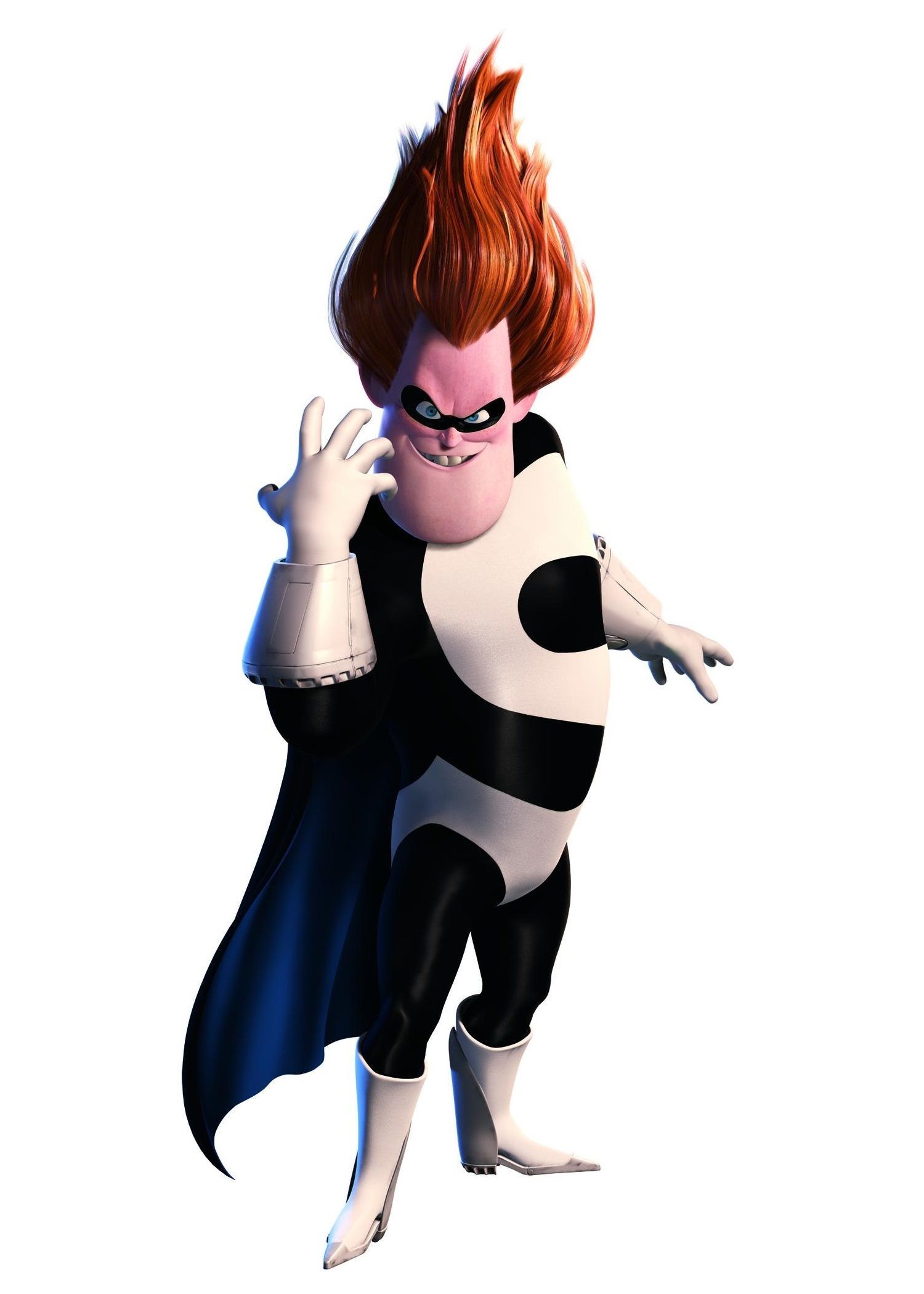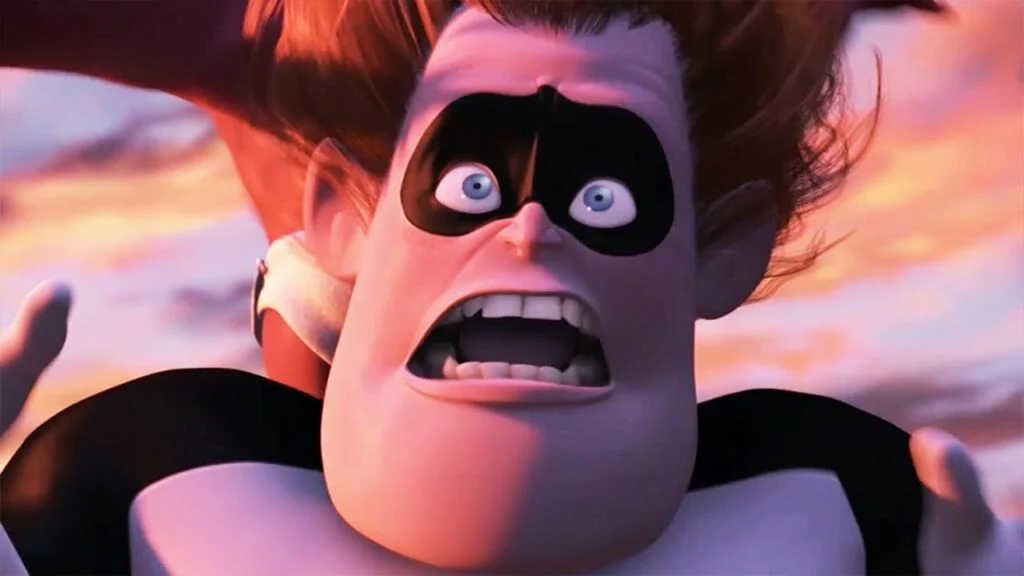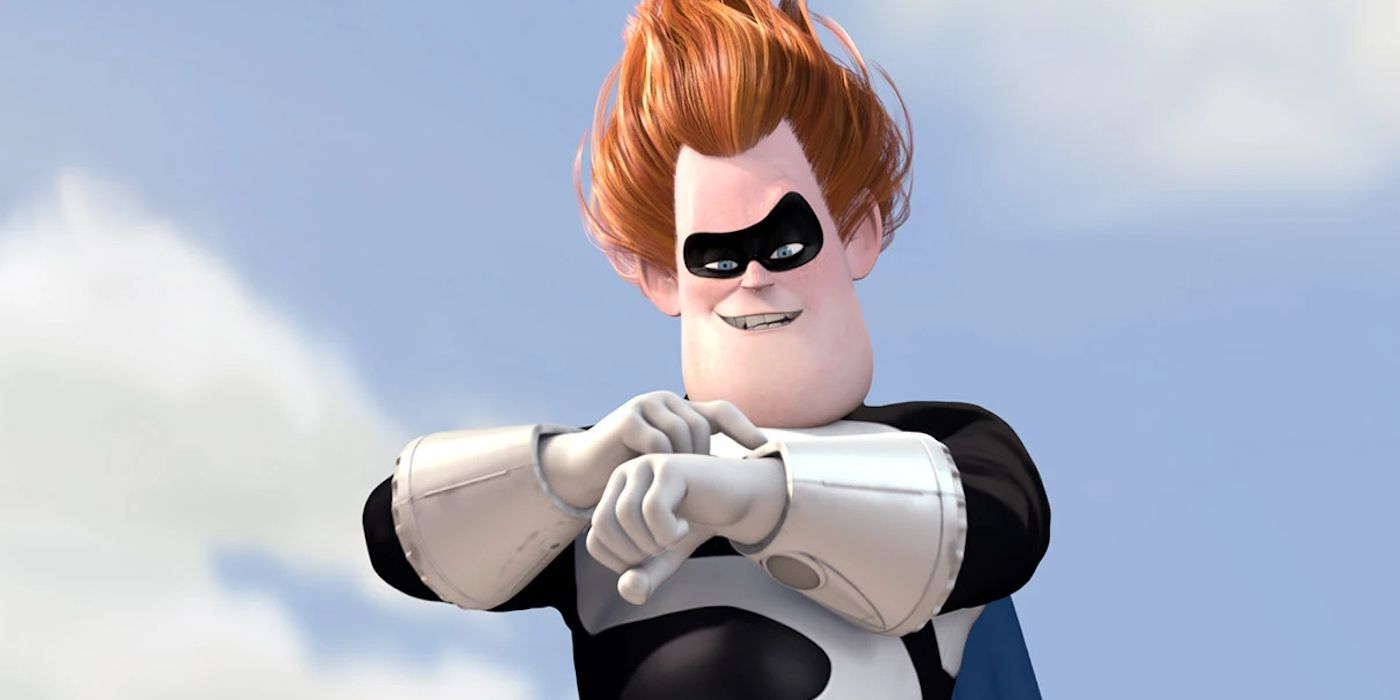The Incredibles Villain: Unpacking Syndrome's Enduring Appeal
There's something truly compelling about a great villain, isn't there? A character who pushes the heroes to their limits, reflecting their flaws and challenging their very existence. For many, when we think about the animated world of super-powered families, the first figure that comes to mind as the main Incredibles villain is Buddy Pine, who later became the unforgettable Syndrome. He's a character whose story, in a way, feels very personal and full of twists.
Syndrome, you see, isn't just some random bad guy; he's a former fan, someone who once looked up to the very heroes he now seeks to bring down. His journey from an eager kid to a formidable foe offers a lot to think about, showing us how rejection and ambition can change a person. It's a tale that, like, really sticks with you, even years after first watching the movie.
His presence in the first film, as the primary Incredibles villain, sets a high bar for antagonists in superhero stories. He makes us question what it means to be special and what happens when those who are "special" are pushed aside. So, let's take a closer look at this fascinating character and why he continues to capture our attention, apparently.
Table of Contents
- The Genesis of a Nemesis: Syndrome's Early Days
- From Fanboy to Foe: Syndrome's Transformation
- The Plan: How Syndrome Aimed to Be Super
- Syndrome's Tools and Tricks: Beyond Just a Cape
- The Impact of Syndrome: Why He Matters
- The Incredibles 2: A New Threat Emerges
- Frequently Asked Questions About The Incredibles Villains
The Genesis of a Nemesis: Syndrome's Early Days
Every great story needs a beginning, and for the Incredibles villain we know as Syndrome, his starts with a young boy named Buddy Pine. Buddy, a rather enthusiastic kid, looked up to Mr. Incredible with an almost absolute admiration. He wanted nothing more than to be his sidekick, calling himself "Incrediboy," which, you know, sounds pretty cute.
He was a bright kid, very smart with machines and inventing things, even at a young age. He put his cleverness into creating gadgets that he thought would help Mr. Incredible fight crime. However, Mr. Incredible, in his own way, turned Buddy away, telling him he worked alone and that Buddy's help wasn't needed. This moment, actually, was a very big deal for Buddy.
That rejection, that feeling of being dismissed by his hero, planted a seed of bitterness in Buddy. It wasn't just a simple "no"; it was a crushing blow to a child's big dreams. This initial pushback from Mr. Incredible, in some respects, set Buddy on a very different path, one that would eventually lead him to become the formidable Incredibles villain we later see.
- Snow Bunny Meaning
- Masalafun Com
- Two Babies One Fox Comic Completo Online
- Okhatrimaza
- Free Followers Tiktok
From Fanboy to Foe: Syndrome's Transformation
After being told to go home, Buddy Pine didn't just fade away; he started to change. That initial spark of admiration for supers turned into a deep-seated resentment. He decided that if he couldn't be a hero in the traditional sense, then he would create his own kind of heroism, one where his own cleverness was the real strength. He spent years building up his resources and his own abilities, using his brain for things other than just helping people.
He got rich, too, selling his clever inventions, particularly weapons, to various shady groups. This allowed him to fund his grand scheme, which was, basically, to make himself the ultimate "super" without any actual special abilities. He wanted to show the world that anyone could be amazing with the right tools, and that people born with special gifts weren't so special after all. You can learn more about how characters like Syndrome develop by exploring general information on character arcs in storytelling. For example, a good resource on this might be found at MasterClass's explanation of character arcs.
His transformation into Syndrome wasn't just about getting powerful; it was about proving a point. He wanted to strip away the idea of "supers" being inherently better or more deserving of praise. He believed that if everyone could be "super," then no one would be, which, in a way, was his twisted idea of fairness. It's a rather chilling thought, really, when you consider it.
The Plan: How Syndrome Aimed to Be Super
Syndrome's big plan as the Incredibles villain was quite clever, if not a bit cruel. He created a series of powerful robots, called Omnidroids, each one more advanced than the last. He would then secretly send these robots out to attack various places, which would force retired supers out of hiding to fight them. This, in turn, allowed him to study their abilities and, eventually, find their weaknesses. He was, in a way, collecting data.
His ultimate goal was to defeat these supers with his own inventions, making himself look like the true hero in the eyes of the public. He would then release his most powerful Omnidroid, stage a fake defeat of it, and then, you know, sell his zero-point energy technology to the world. He wanted everyone to have access to these gadgets, so that anyone could be "super." This would, in his mind, make the truly gifted individuals irrelevant.
This whole scheme was a long game, played out over many years, showing just how much his resentment had grown. He wanted to change the very idea of what a hero was, placing technology and invention above natural talent. Learn more about on our site, and perhaps you'll find more insights into how villains like Syndrome operate.
Syndrome's Tools and Tricks: Beyond Just a Cape
Syndrome's main way of fighting wasn't through super strength or speed; it was through his incredibly smart mind and the gadgets he made. His signature tools were his zero-point energy gauntlets. These gauntlets could create a field that stopped things dead in their tracks, making it impossible for supers to use their strength or speed against him. It's a very effective trick, to be honest.
Beyond his gauntlets, Syndrome had a whole island that served as his secret base, full of high-tech labs, training areas, and, of course, the giant factory where he built his Omnidroids. He had advanced vehicles, surveillance systems, and a whole army of robotic minions. He was, pretty much, a one-man tech empire aimed at bringing down the super world.
His intelligence was, perhaps, his most dangerous weapon. He didn't just build things; he planned meticulously, anticipating the moves of the supers and setting traps for them. He used his knowledge of their weaknesses, gained from his Omnidroid tests, to make sure his plans would work. This level of planning is what made him such a formidable Incredibles villain, arguably.
The Impact of Syndrome: Why He Matters
Syndrome, as the main Incredibles villain, serves as a really important mirror for Mr. Incredible. Mr. Incredible, at the start of the film, is struggling with feeling ordinary and missing his glory days. Syndrome, on the other hand, wants to be extraordinary, even if he has to force it. Their paths cross in a way that highlights the different sides of what it means to have, or want, special abilities.
His story also makes us think about the idea of exceptionalism. Syndrome's belief that "when everyone's super, no one will be" is a rather sharp commentary on society's obsession with being special. He wants to tear down the very idea of unique gifts, suggesting that technology can make anyone equal. It's a very thought-provoking idea, isn't it?
He's a villain born from rejection, which makes him, in a way, relatable, even if his actions are extreme. His bitterness and desire for recognition drive the whole plot, making him a central figure in the film's message about family, identity, and what it means to be a hero. He's a truly memorable Incredibles villain, still talked about today. You can also find more information on this page , which might give you a different perspective on character motivations.
The Incredibles 2: A New Threat Emerges
While Syndrome left a huge mark as the original Incredibles villain, the second movie brought a fresh face to the antagonist role: Screenslaver, who turns out to be Evelyn Deavor. She's a very different kind of threat, moving away from physical confrontation and focusing on mind control through screens. Her motivations are also quite distinct from Syndrome's.
Evelyn believes that people have become too reliant on heroes, making them weak and complacent. She wants to get rid of supers not out of personal bitterness, like Syndrome, but because she sees them as a crutch for society. She aims to show the world that supers are a danger, using her technology to make people fear them. It's a more philosophical kind of evil, in some respects.
Her methods involve hypnotizing people through screens, turning them into puppets. This modern kind of "incredibles villain" reflects a different set of societal worries, like media influence and the dangers of too much screen time. She's a clever and subtle opponent, forcing the Parr family to think differently about how they fight crime. She's, like, a really smart bad guy.
Frequently Asked Questions About The Incredibles Villains
Who is the main villain in The Incredibles?
The primary Incredibles villain in the first movie is Syndrome. He was originally a fan named Buddy Pine who wanted to be Mr. Incredible's sidekick. After being turned away, he spent years developing advanced technology to become a powerful foe, aiming to make all supers obsolete. He's, you know, a very personal kind of enemy for the Parr family.
What happened to Syndrome at the end of The Incredibles?
At the very end of The Incredibles, Syndrome meets his end. While trying to kidnap Jack-Jack, the baby of the Parr family, his cape gets caught in the turbine of his jet. Mr. Incredible had, earlier in the movie, warned him about the dangers of capes. This, basically, leads to Syndrome's destruction, which is, in a way, a bit ironic.
Why did Syndrome want to make everyone super?
Syndrome wanted to make everyone "super" because he believed that if everyone had special abilities, then no one would be truly special. His goal was to get rid of the idea of innate heroism and to show that his technology could create greatness for anyone. This, in his mind, would make the truly gifted people, like Mr. Incredible, seem ordinary. It was his way of getting back at those who, he felt, had dismissed him, you know.

Syndrome Disney Pixar's The Incredibles Wallpapers - Wallpaper Cave

A Comprehensive Guide to The Incredibles Villains

'The Incredibles' Almost Had a Totally Different Villain